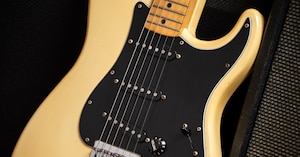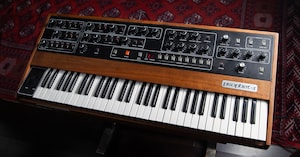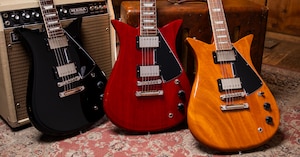Portable PAs
Speaker/Amplifier Systems
Public address systems, or PAs, are speaker/amplifier systems designed to help get your music heard clearly in front of an audience. Over the last decade, PAs have become more portable, making it easier to take and perform on-the-go in front of crowds everywhere. When shopping for a PA, it's important to look for a system with enough inputs to support your vocals, acoustic guitar and any other instrument you may use, as well as appropriate speaker size and power handling (usually shown in watts) to provide sufficient coverage for the venues you'll be playing.
There are three common types of PAs. All-in-one systems are powered speakers with a built-in mixer giving performers and sound technicians the ability to adjust volumes and plug in instruments directly at the speaker. Component systems have a separate mixer, amplifier and speakers, trading simplicity for increased flexibility and a "mix-and-match" approach. Powered mixer systems offer a compromise between the two, with the power amp and mixer living in the same box, providing ample power for unpowered (or passive) speakers.
Shop NowDI
Acoustic DIs
There are two main types of cables used for getting signals from mics and instruments to a mixer. Microphone cables (also known as XLR cables) use a low-impedance balanced signal. Instrument cables (usually those with 1/4" TS, or "tip/sleeve" connectors) carry a relatively high-impedance unbalanced signal which tends to lose high frequencies over longer cable runs. Balanced cables offer the most noise-free, full bandwidth audio signal over long cable runs. DI boxes are small units that are used to convert from high-impedance, unbalanced to low-impedance balanced signals. In live situations, this will reduce hum and interference while preserving frequency response over stage-length cable runs.
Acoustic DIs take the concept a step further by adding a preamp specifically designed for acoustic guitars/instruments. Not only will these specialized units boost the signal of your acoustic instrument's pickup, they usually offer added features such as effects, EQ/tone control and other sound-shaping tools. When using an acoustic/electric instrument, the pickup is where the sound is captured. Then the signal is transferred along the cable into the DI box. If you find your guitar is sounding a little thin or needs some extra bottom-end, an EQ can be the difference that gets you the tone you're after. When using an EQ, a good tip is to try dialing back or "cutting" the bass, middle or treble before you start raising the volume. An EQ will only affect the volume of the frequencies you select, allowing you to carve out unwanted hum, hiss or noise. There's no right or wrong way to dial in your EQ so have fun, take your time, and find your sound.
Shop NowMicrophones
Dynamic Microphones
Choosing a microphone isn't always easy, given the wide variety of microphones available, in all shapes, sizes and types. Here are a few tips that will guide you in selecting the right microphone.
For live performance, it's important to use a mic that can clearly capture the full-range of your vocals. One of the most widely used handheld vocal mics in the world is the Shure SM58, with its highly effective, built-in spherical windscreen to minimize breath, wind and pops. Most vocalists prefer a mic with a cardioid (heart-shaped) pickup pattern that rejects sound from the sides and back, while picking up what's directly in front of it. There are many microphones, both wired and wireless, suitable for live performance, and every voice has a mic that will complement it perfectly. Please check out our assortment of live microphones for more options.
Shop NowInstrument Microphones
In recent years, there's been an increasing movement towards quieter stage sound with smaller amps for better control over the final, front-of-house mix (what the audience hears). More and more amps are being developed to get great live performance tone with those lower volumes in mind. This makes the choice of mic even more important to make sure the audience gets to hear all that great sound. For years, the Shure SM57 has been a go-to instrument microphone for amps and other electric instruments, offering road-ready construction and a straight-forward, clean reproduction of sound. Another outstanding mic to check out is the Sennheiser e609, designed as a simple and great-sounding solution for guitar amplifiers.
Shop NowDrum Microphones
Depending on the size of the venue and the style of music you are playing, you can use as few as three mics for a drum kit. However, in medium-to-large-sized venues, miking the entire drum kit is extremely important. That's why companies like Shure have created mic packages designed to cover your entire set. These mic kits include snare and tom microphones, a single bass drum mic, clips for each microphone to be mounted and, frequently, a pair of overhead mics. Buying such a kit makes it easy to make sure you get a consistent, well-matched sound for your drums.
Shop NowEffects Processors
Vocal Processors
Effects processors add audio effects like reverb, delay, pitch and compression to your voice, instrument or total mix to help craft an individual sound. Processors can range from general purpose to vocal-specific units and can have single effects or a whole range to choose from. For example, a multi-effects processor might have all of the effects listed above, plus looping functions, chorus, flanger, microphone emulation and much more. Visit a local store to experiment with different processors and find what works best for your sound.
Shop Now


